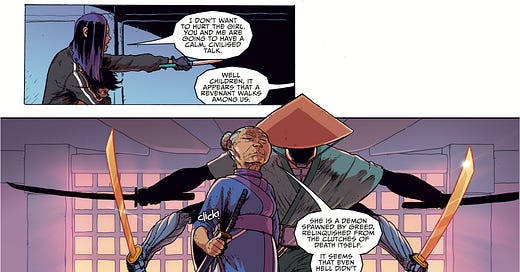Comic Tutorial #1: How to write awesome panel descriptions
180 rules, framing, scene choreography and more tips!
Hello and welcome to my first comic tutorial - an ongoing series where I share my expertise and experience of how write, produce, print, market, fund and sell your comics.
So, to kick off, I wanted to give you some insights into how my main comic series Killtopia was written, and share some key rules that I use when scripting and framing panels. If you manage to write clear, descriptive and consistent panel notes, artists will be able to ‘see’ what you see in your head when writing the scene more clearly, and the art will look closer to how you imagined it as a result.
Here’s a starter example: Note that the panel descriptions and art don’t exactly match - this isn’t a bad thing at all, as we’ll soon see…
Let’s dive in!
Keep reading with a 7-day free trial
Subscribe to Dave Cook Comics to keep reading this post and get 7 days of free access to the full post archives.



